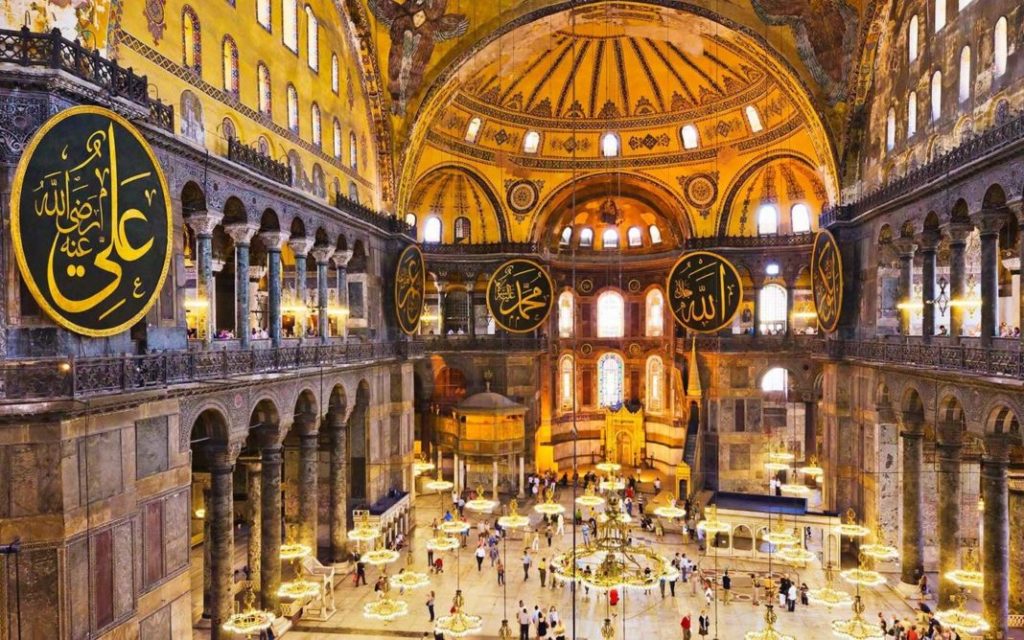Not only does Istanbul sit on the Bosphorous Strait—precisely where the continents of Europe and Asia converge—but it also seems to be a crossroads for the ancient and modern worlds. The city has been greatly influenced by various waves of powers and people of all cultural backgrounds.
Hagia Sophia is one of the historical architectural wonders that still remains standing today.
Millions of visitors come here each year to marvel at the unrivaled architecture and breathtaking interiors—and, perhaps, to get a sense of the civilizations that have claimed the Hagia Sophia as their own.
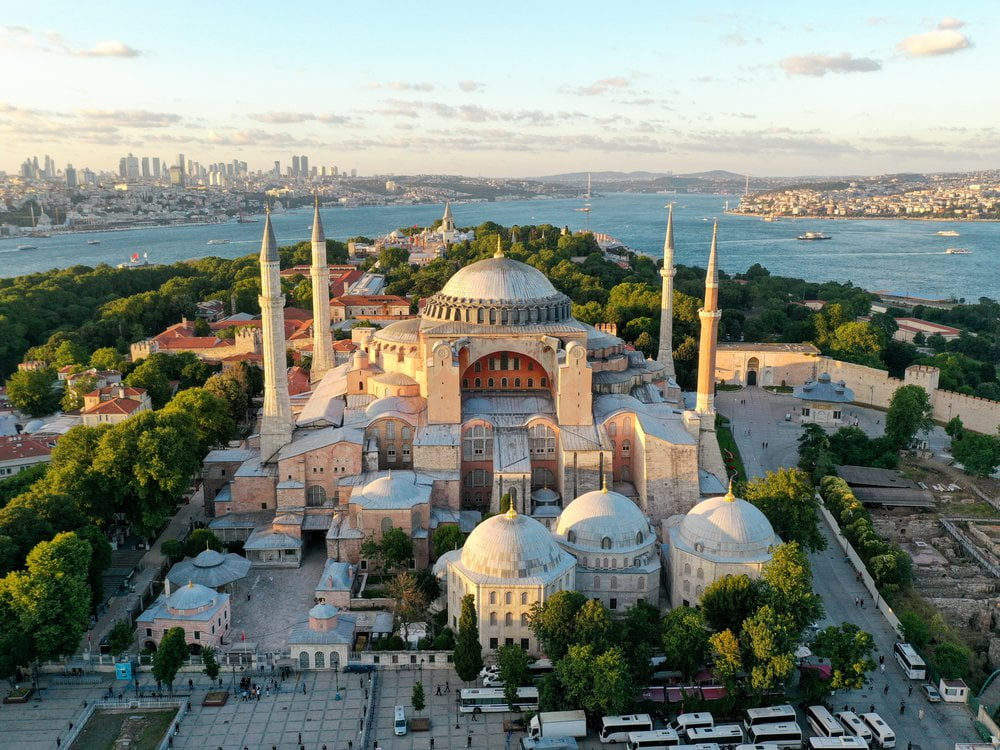
Passed along from the Greeks to the Ottomans and many more, the Hagia Sophia tells a number of stories.
Many faiths have prayed at the Hagia Sophia
Two basilicas stood at this site before the current building was erected: the Church of Constantius II and the Church of Theodosius II.
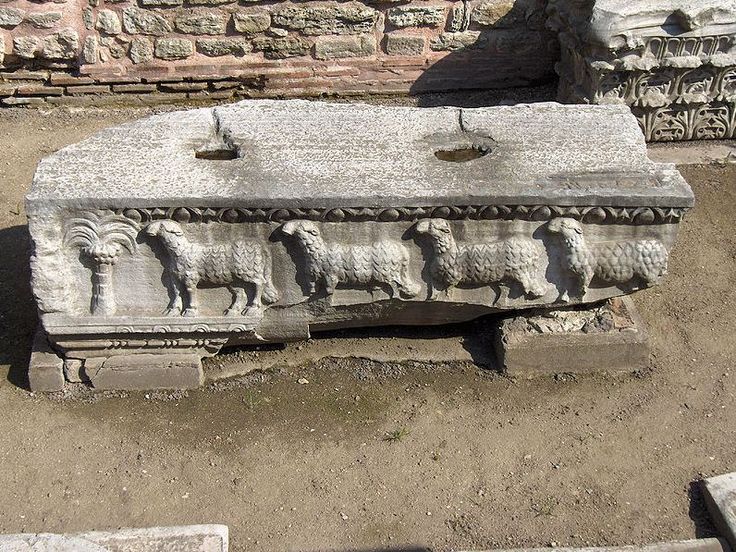
In 532, not long after the destruction of the second church, Byzantine Emperor Justinian I called for an even more ornate church to be constructed.
What we know as the Hagia Sophia opened its doors in 537, and served as the seat of the Eastern Orthodox Patriarch of Constantinople. It briefly fell into the hands of Roman Catholicism (from 1204 until 1261) during The Crusades. In 1453, the Hagia Sophia became an imperial mosque when the Ottomans conquered the city. It would remain an Islamic house of worship until 1935, when it was secularized and converted to a museum.
In 2020, a controversial decision was made by the state of Türkiye. The Hagia Sophia was converted back to a mosque. The decision was met with much scrutiny as protestors argued the landmark was rightfully a Christian church. Nonetheless, the Hagia Sophia was converted to a mosque and Muslims were able to worship at the monument again.
It boasts ingenious architecture
Much of the Hagia Sophia’s preliminary structure shows Byzantine innovation. The dome, for example, is uniquely supported by four pendentives—the first building to employ those curving, triangular vaults. And the 40 windows that line the base of the dome don’t just serve to channel in natural light. They also help to ease the weight of the dome upon the entire structure.

Each successive culture has left its mark on the Hagia Sophia, too. The four widely famed minarets, for example, are a prominent feature of Islamic design.
The intricate mosaics tell a tale
While many of the original mosaics that portrayed Christian imagery were destroyed when the Hagia Sophia became a mosque (or were shipped to Italy by Crusaders), some were discovered when the structure became a museum. For centuries, the artworks were preserved behind ornate Islamic tile work.
The Deësis Mosaic, created at the end of the Catholic period, is particularly intriguing because it depicts Jesus Christ as someone else. Some researchers believe Apollonius of Tyana, a Greek philosopher, sits in Christ’s place. According to this theory, Christ is fictional, and Apollonius served as a model for the story.
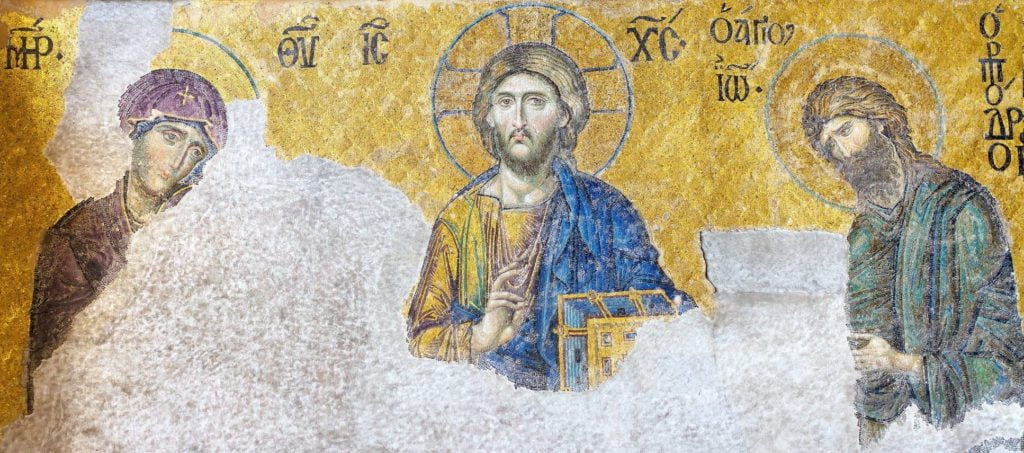
Waters of panacea attract the ill
Many visitors flock here to drink from two water wells, hailed for their purported healing powers. It is said that if you drank three times in a row, on Saturdays, from the well in the main hall, you would be cured of illness.
Another site, known as the Sweating Column, puzzles guests because it remains constantly wet even on the hottest days.
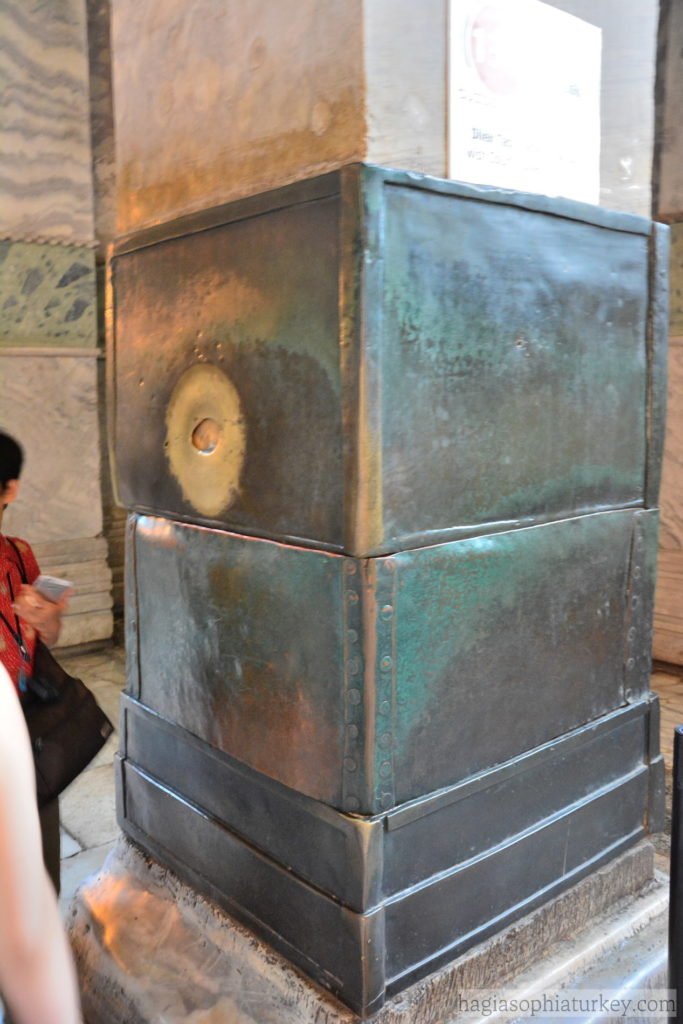

At its base is a hole through which many place a finger in hopes of being healed. Myth or not, many visitors give it a shot.
Source: Travel and Leisure by Stephen Casale/Wikipedia
This article was first published on 11 January 2018 and updated on 1 April 2024

